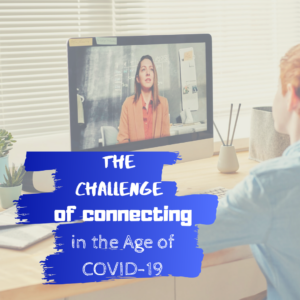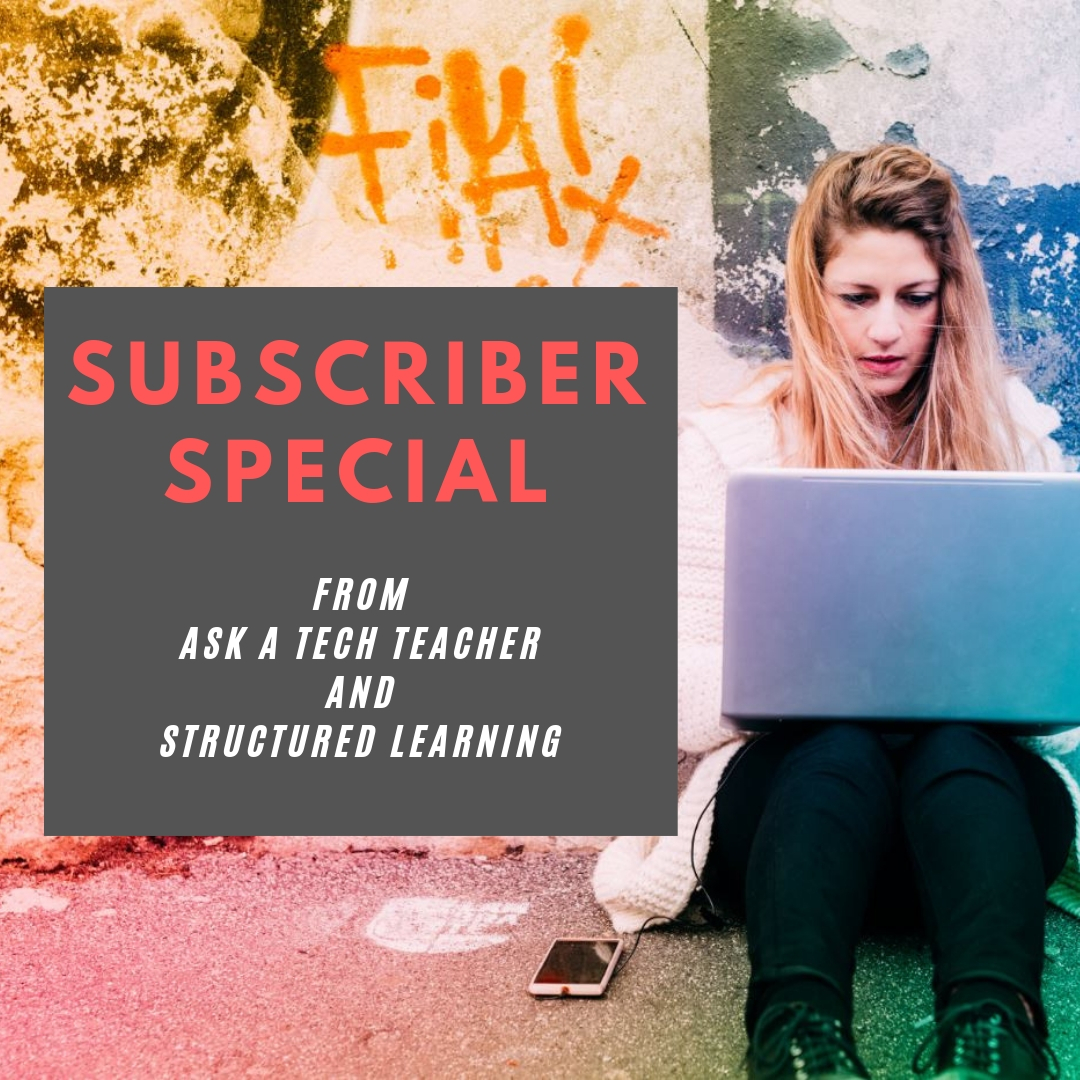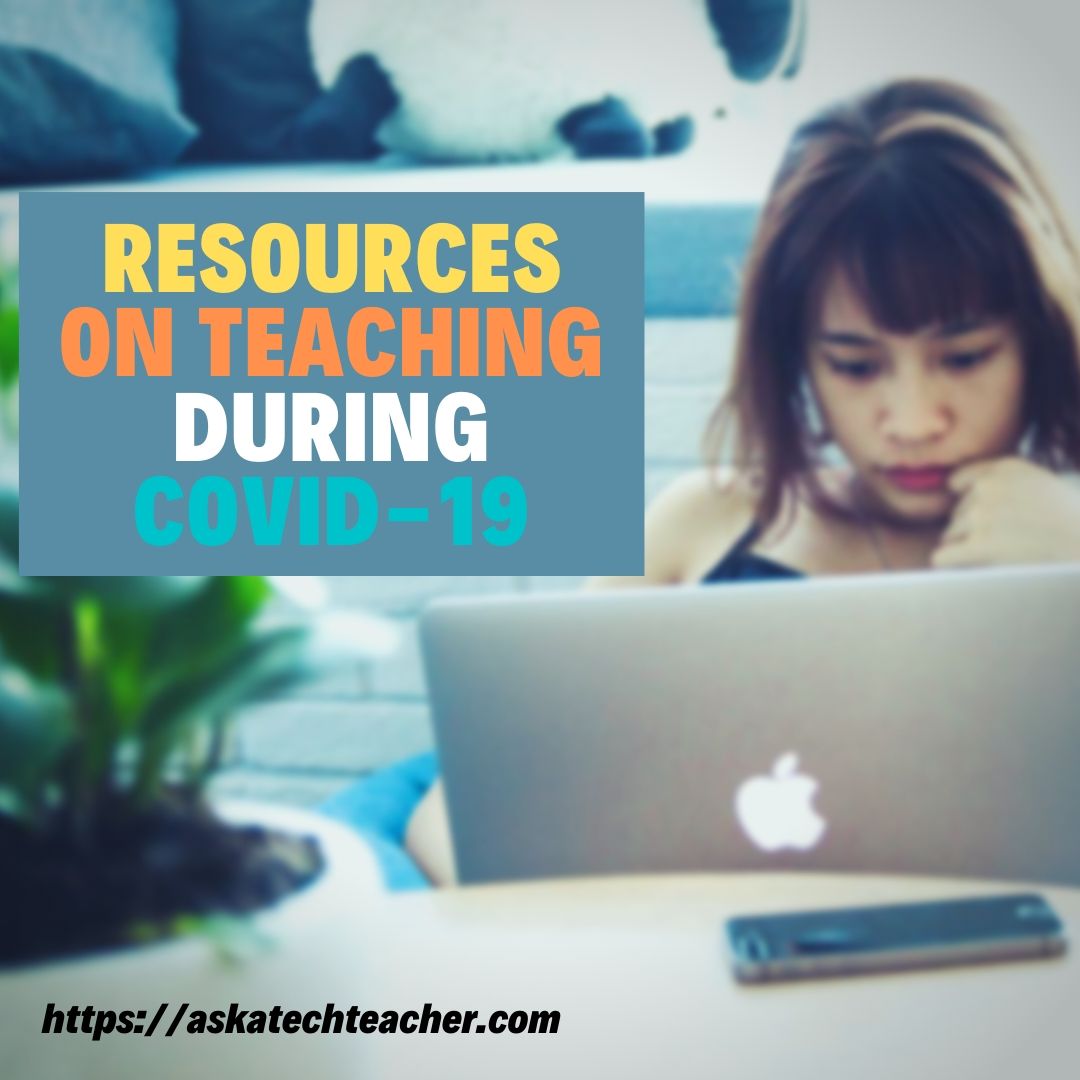Author: Jacqui
What You Might Have Missed in April
Here are the most-read posts for the month of April:
- Why College Matters for a Successful Career in Tech
- 15 Websites to Teach Financial Literacy
- #CoronaVirus–This Week’s Inbox
- Stem Education in 2020
- How to Assess Digital Literacy
- Teaching During #CoronaVirus–An Old Strategy That’s Perfect
- Teaching During COVID-19
- Why Earth Day May be the Most Important Event at School
- 10 Tips for Teaching Remotely
- 3 Apps That Energize Learning
- End of Year Activities
- The Challenge of Connecting in the Age of COVID
Share this:
Subscriber Special: May
Every month, subscribers to our newsletter get a free/discounted resource to help their tech teaching.
May
Discounts on Select Print Books
Any of these books: $25.99
Kindergarten Technology Curriculum
1st Grade Technology Curriculum
3rd Grade Technology Curriculum
High School Technology Curriculum–Book 1
Ultimate Guide to Keyboarding: Middle School
All of these book are ordered and delivered through Amazon.
Jacqui Murray has been teaching K-18 technology for 30 years. She is the editor/author of over a hundred tech ed resources including a K-12 technology curriculum, K-8 keyboard curriculum, K-8 Digital Citizenship curriculum. She is an adjunct professor in tech ed, Master Teacher, webmaster for four blogs, an Amazon Vine Voice, CSTA presentation reviewer, freelance journalist on tech ed topics, contributor to NEA Today, and author of the tech thrillers, To Hunt a Sub and Twenty-four Days. You can find her resources at Structured Learning.
Share this:
The Challenge of Connecting in the Age of COVID
I met Kiana Berkman in this traumatic time of moving teaching home through an invigorating discussion on education and how it’s changing. Kiana and her tutoring agency (Berktree Learning Center) were already ahead of the curve on that. I asked her to share insights on how COVID-19 is affecting her students and their passion for learning. I think you’ll like what she and her husband, Daniel (partner in the tutoring business) have to say:
***
 There is a popular saying that applies to learning: “you can lead a horse to water, but can’t make him drink.” Any educator knows that you can’t force a student to learn, though that does not stop them from trying anything possible. A teacher could create the most gorgeous lesson plans, and employ all the best known tactics, and there may still be students that don’t want to learn. Yet students are not horses, nor are teachers horse-trainers. They’re both human beings with a latent desire to find and share knowledge. Some students have not accessed this desire yet, and their teachers are trying earnestly to connect with these students on an intellectual level, to release that latent desire. For a teacher, there is no experience more gratifying than helping a student search deep for understanding and watch as they finally discover it!
There is a popular saying that applies to learning: “you can lead a horse to water, but can’t make him drink.” Any educator knows that you can’t force a student to learn, though that does not stop them from trying anything possible. A teacher could create the most gorgeous lesson plans, and employ all the best known tactics, and there may still be students that don’t want to learn. Yet students are not horses, nor are teachers horse-trainers. They’re both human beings with a latent desire to find and share knowledge. Some students have not accessed this desire yet, and their teachers are trying earnestly to connect with these students on an intellectual level, to release that latent desire. For a teacher, there is no experience more gratifying than helping a student search deep for understanding and watch as they finally discover it!
The Distance Before Distance-Learning
Connecting intellectually with students has always been the challenge addressed to teachers, even before social-distancing. Students face innumerable difficulties in their life that conflicts with regular attendance and consistent attention in the classroom. Many of these conflicts come from a barrage of social challenges, ranging from complex family tensions, lack of accessibility to adequate resources due to financial constraint, or just plain old emotional growing pains. Going to school each day is the most consistent life experience for many students, and teachers try their hardest to make the classroom experience as reliably consistent as possible.
Teachers who have the opportunity to work individually with students get a rare opportunity. Classroom sizes have limited the teacher’s reach to individual students, and standardization has normalized an almost industrial perspective of student pass-rates, as if failing students are merely the result of quality control. The more that students and teachers become statistics, the less that their human qualities are recognized and accessed. Needless to say, society has been widening the distance between students and teachers long before the Corona virus made it mandatory.
Share this:
3 Apps That Energize Learning
 Let’s face it. Teachers juggle an exhausting schedule of parent conferences, administrative tasks, and specialized student needs. They take work home evenings and weekends and often are forced to choose between family and job when it comes to allocating a finite quantity of time over what surely seems to be infinite needs.
Let’s face it. Teachers juggle an exhausting schedule of parent conferences, administrative tasks, and specialized student needs. They take work home evenings and weekends and often are forced to choose between family and job when it comes to allocating a finite quantity of time over what surely seems to be infinite needs.
The teachers I know want to be more organized, work more efficiently, use available tools to complete tasks faster, and prioritize needs. Knowing this, I look for tools to energize my teaching, do stuff like:
- save time
- accomplish common tasks more quickly
- make access from digital devices easy and intuitive
- are simple to use so even when my mind is somewhere else (like on the child across the room or the admin peeking in my door), the tool performs flawlessly
Here are three apps I love that meet these qualifications:
Flip
Flip is a freemium discussion app where teachers (or even students) pose a discussion topic (via video) and students respond with a short video. The post may include a recording, an attachment, decorations, or any number of other tools to share their knowledge. Responses show up in a grid format that’s easy to view and fun to read for students and teachers.
Educational applications
This app is a wonderful method of differentiating for varied student needs. Here are just a few ways to use it in your class:
- ask questions about reading material or the lesson plan as a formative assessment to measure student understanding of the topic.
- let students pose questions about material that classmates can answer–a backchannel approach to learning
- have students share a quick video about themselves at the start of a new school year
- extend a classroom discussion so all students can offer their ideas, even the shy members
- brainstorm on a topic to collect lots of ideas before drawing a conclusion
IFTTT
Share this:
10 Tips for Teaching Remotely
 I’ve been working from home for years but most people haven’t. I posted this article about a year ago but have updated it for the challenges we now face with #covid19
I’ve been working from home for years but most people haven’t. I posted this article about a year ago but have updated it for the challenges we now face with #covid19
Truth is, life often interferes with work. Vacations, conferences, PD–all these take us away from our primary job functions and the environment where we are most comfortable delivering our best work. But you do need the right equipment and setup to make that happen. Here’s what I currently use to teach from home or can easily arrange:
-
- Have necessary apps on iPads and smartphones. This includes your LMS, virtual meeting tool, cloud accounts, email, scan, social media, and sharing.
- Have a digital notetaking program–Evernote, OneNote, Notability, or Google Keep for example.
- Wean yourself from printing hard copies. It’s easier to do than it sounds. My printer broke–well, it wouldn’t print more than one page without jamming. That made it hard to print a lot of documents. Instead, I loaded the document onto my iPad (or laptop) and interacted with it there. PDFS: I can annotate with the Edge browser or a dedicated app. Google and Microsoft docs: Easy to work with those right from the platform. Once I’ve marked them up as needed, I can email the file, take a screenshot and share it, or do nothing (in the case of Google docs). No printing required. I am now completely used to that–would never go back to the paper-wasting approach.
- If you go somewhere else to work (I was going to say a coffee shop but that’s out of bounds this month), don’t use a public WiFi. Use a hot spot connected to your phone. Public WiFi like Starbucks are notoriously insecure.
- Be brave about solving problems associated with online work. Don’t let setbacks and roadblocks stop you. Be accountable to yourself or you won’t get stuff done. I have to say, so many of my fellow teachers are risk-takers. When this remote teaching problem was dumped in their lap, their attitudes were positive, can-do, and try to stop me!
- Have a virtual meeting program like MS Teams, Zoom (if your school allows it), Google Hangouts, Google Meet, Webroom.net, Big Blue Button, or another. These are for larger groups (like a book club meeting). Small group video calls work nicely with programs like Facetime, Skype, or Google Hangouts.
- Student collaborative groups can be addressed with a mix of Facetime on phones and the Google Doc on the digital device. Or another way–I’d love to hear how your students address this.
- Have backup batteries for your phone, laptop, and iPad. You’re using them a lot more than usual. They’ll run through your power more quickly than you’re accustomed to. And, videos, personal hotspots and Google Maps burn through power. What should last nine hours turns out to be two.
- Have redundancy where something is important. For example, my external battery charger died and my iPad ran out of juice. Since then, I purchased a redundant backup power supply.
Share this:
Last Chance: Differentiated Instruction Online Class (MTI 563)
MTI 563: The Differentiated Teacher
MTI 563 starts in one week–Monday, April 27, 2020! Last chance to sign up. Click this link; search for MTI 563 and click for more information and to sign up.
What is it
Differentiation in the classroom means meeting students where they are most capable of learning. It is not an extra layer of work, rather a habit of mind for both teacher and student. Learn granular approaches to infusing differentiation into all of your lesson plans, whether you’re a Common Core school or not, with this hands-on, interactive class. Ideas include visual, audio, video, mindmaps, infographics, graphic organizers, charts and tables, screenshots, screencasts, images, games and simulations, webtools, and hybrid assessments.
Assessment is based on involvement, interaction with classmates, and completion of projects so be prepared to be fully-involved and an eager risk-taker. Price includes course registration, college credit, and all necessary materials. To enroll, click the link above, search for MTI 563 and sign up. Email askatechteacher at gmail dot com for questions.
What You Get
-
- 5 Activities (topics)
- tech ed videos, lesson plans, articles
- 5 weeks
- 4 virtual meetings
- Unlimited questions/coaching during virtual face-to-face meetings and other pre-arranged times. We stay until everyone leaves.
- 3 college credits
Course Objectives
At the completion of this course, you will be able to:
-
- Use technology to differentiate for student learning styles
- Understand how differentiating content and presentation engages a great proportion of learners
- Ensure that the outcome of student learning demonstrates understanding
- Vary assignments to address all learners’ needs
- Create an inclusive learning environment in the classroom
Who Needs This
This course is designed for classroom teachers, tech teachers, integration specialists, media specialists, LMS, administrators, principals, homeschoolers, teachers of teachers, and pre-service professionals.
What Do You Need to Participate
-
- Internet connection
- Accounts for online tools like a blog, Twitter, various web-based tools
- Google account (can be your school account or your personal one)
- Ready and eager to commit 5-10 hours per week for 5 weeks to learning tech
- Commitment to review materials prior to the virtual meeting (so you are prepared to address questions with classmates)
- Risk-taker attitude, inquiry-driven mentality, passion to optimize learning and differentiate instruction
NOT Included:
-
- Standard software assumed part of a typical ed tech set-up
- Tech networking advice
- Assistance setting up hardware, networks, infrastructure, servers, internet, headphones, microphones, phone connections, loading software
Screenshots
[gallery type="slideshow" ids="59175,59181,59177,59178,59179,59180,59176"]Share this:
Teaching During COVID-19
Articles on #CoronaVirus you won’t want to miss:
Resources You Need During #COVID19
Teaching Online During #COVID19
Teaching Online During #COVID19–More from my Inbox
#CoronaVirus–This Week’s Inbox
Teaching During #CoronaVirus–An Old Strategy That’s Perfect
13 Teaching Strategies to Shake up Your Remote Teaching
8 Ways Parents and Teachers Support Remote Teaching (coming May 28)
Share this:
Teaching During #CoronaVirus–An Old Strategy That’s Perfect
 A problem with online teaching is that students have to sit through a long lecture-sort of presentation–if you’re trying to replicate your classroom teaching. Some good advice I see over and over regarding teaching online is DON’T try to replicate your physical classroom. Instead, teach using online’s strengths. A good way to do that is with a flipped classroom. Chris Landry, an eighth-grade science teacher at Memorial Middle School, said he’s been able to continue teaching students amid the closures through videos and has even provided them with fun activities to do at home. What made it easier? Flipped Classrooms:
A problem with online teaching is that students have to sit through a long lecture-sort of presentation–if you’re trying to replicate your classroom teaching. Some good advice I see over and over regarding teaching online is DON’T try to replicate your physical classroom. Instead, teach using online’s strengths. A good way to do that is with a flipped classroom. Chris Landry, an eighth-grade science teacher at Memorial Middle School, said he’s been able to continue teaching students amid the closures through videos and has even provided them with fun activities to do at home. What made it easier? Flipped Classrooms:
“…adjusting to the new way of teaching was easier than expected because he was using a “flipped classroom” while schools were in session.
For a thorough overview of flipped classrooms, take a look at this infographic from Cool Infographics:
Share this:
Stem Education in 2020
A growing focus of schools is STEM. Ask a Tech Teacher contributor, Brianna, has some general observations about STEM education in 2020:
Stem Education in 2020
About two decades ago, the sciences were not so popular among younger generations. People keen on mathematics, physics, or IT were awe-inspiring and seemed to have supernatural abilities. But, the importance of sciences and technologies has grown; that’s why professionals in certain fields have become headhunters’ “targets.” The world’s workforce lacked a lot of science specialists, that is why STEM education became more popular.
So, what is STEM education? STEM is an acronym that stands for science, technology, engineering, and mathematics. These subjects are being taught cross-disciplinary and in a complex which refers to real situations. This approach fosters the motivation of students which tend to make use of essay help service and tutors to have work done. You might think that there can be nothing new about STEM education in K-12 and higher education. Still, there are several facts you may want to know about.
The Role of Technology
The essential component in 2020 is a T-part of STEM – Technology. It is not only an object of education but a necessary and irreplaceable means of teaching STEM as well. For several years now, we observe a rapid growth of online and remote teaching, learning, and even practicing. Education in various disciplines has undergone significant change with the introduction of VR and AR into the classrooms. Now it is possible to create virtual reality and virtual laboratories for students to practice in. And this is only a small part of the technologies’ influence on modern life and education.
Grants and New Opportunities
Currently, numerous STEM courses and grants are launching in many universities and organizations. Moreover, famous corporations and brands are funding them, making it possible for students with limited financial possibilities to get quality education free of charge. Such examples are Ford Motor, Toyota Foundation, and Toshiba. They offer grants not only to students of higher education institutions but at a school level too. The NEA Foundation also promotes grants and projects to underserved communities that do not have access to a quality education process and resources.
Share this:
What You Might Have Missed in March
Here are the most-read posts for the month of March:
- Tips to avoid plagiarism
- College classes in blended learning
- New book from Ask a Tech Teacher: Inquiry and PBL
- How to Eteach in a COVID-19 Pandemic
- 2020 Edtech trends
- Why teach poetry?










































